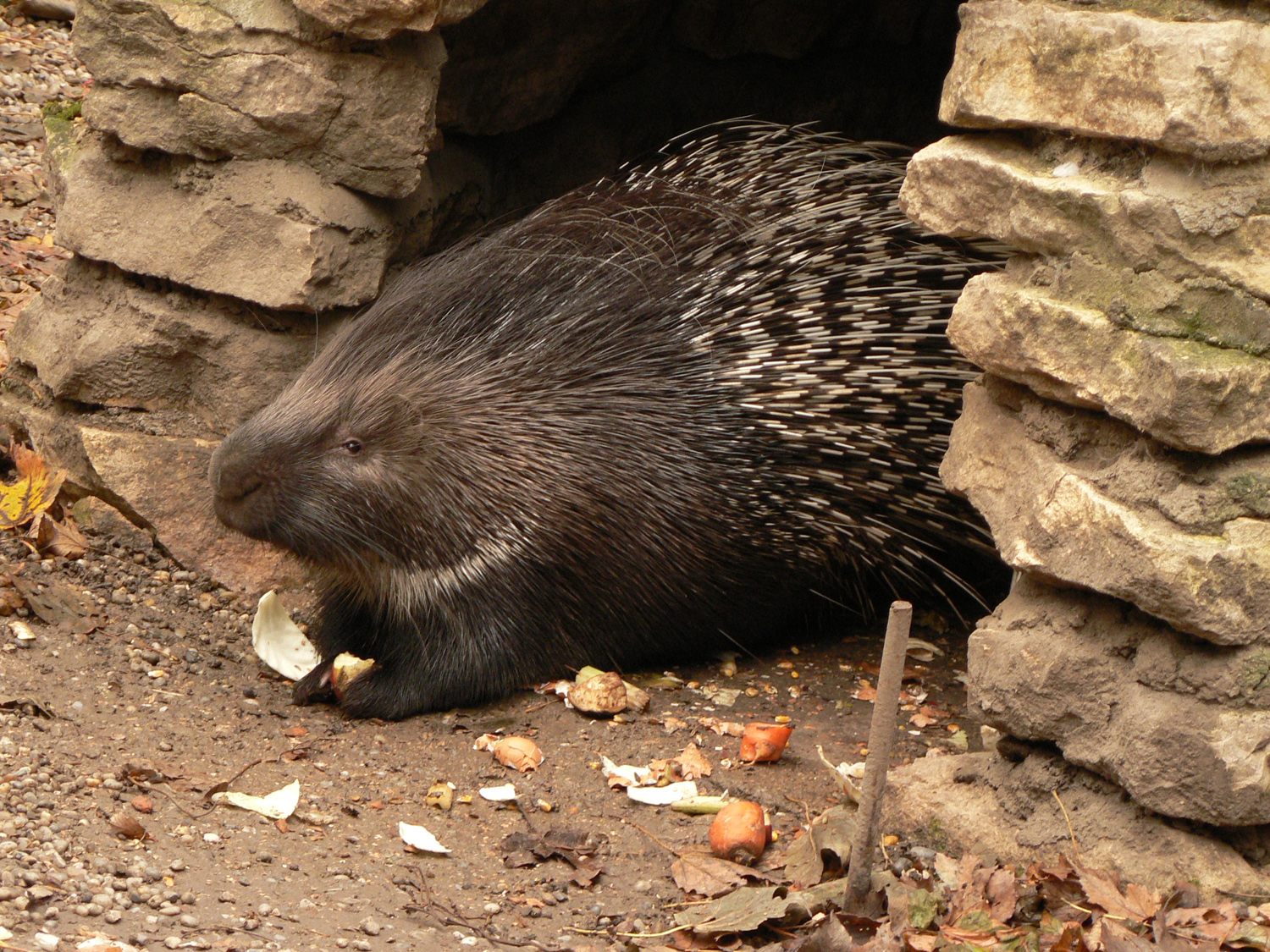

The Cape porcupine is the largest porcupine in the world, alongside the nearly identical African crested porcupine. They are also known to collect bones to gnaw on in their dens. They feed on these as well as fruit, bark, cultivated crops, and occasionally carrion. They are also equipped with long claws that they use to dig up roots and tubers. Like other rodents, they have a single pair of sharp, continually growing incisor teeth that they use to gnaw and rip tough plant material. Cape porcupines usually forage alone and sometimes in small groups. They are shy and cautious when foraging, and while they appear clumsy in their movements, they can run fast enough to outpace humans when disturbed. They are less active when it is cold and will huddle together for warmth.Ĭape porcupines come out at night and rustle around in search of food. A family group often develops an extensive inter-connected burrow system. They spend their days sheltering in rock crevices, caves, abandoned aardvark burrows, or underground burrows that they excavate themselves. They are the largest rodents in Africa and are surpassed in Asia and Europe only by beaver.Ĭape porcupines are monogamous and live in small family groups comprised of an adult pair or an adult pair with offspring. These are distinguished from the arboreal porcupines of the “New World.” Terrestrial porcupines are found in the warmer regions of Africa, Asia, and Europe. Cape porcupines are a terrestrial species of porcupine, otherwise known as “Old World” porcupines. They are more likely to be found in open rather than wooded areas, though, and seek out rocky crevices and caves for shelter. They are highly adaptable and can survive just about anywhere that vegetation is available.

North American porcupines mate in the late summer/early fall. They may eat up to a pound of plant material per day. They also gnaw on old bones and shed antlers for calcium and salt. In the spring, they eat buds and in summer, roots, leaves, berries, fruits and seeds. Porcupines enjoy a seasonal diet, feeding on the inner bark of trees and evergreen needles during the winter. Like the beaver, the North American porcupine has bright orange incisors. Their broad feet and sharp claws also help them dig for roots and for shelter. Their quills are hollow which provide buoyancy while swimming.ĭue to long, curved claws, they have a pigeon-toed walk while on the ground. They may have yellowish quills and yellow-tipped guard hairs, or white quills and white-tipped guard hairs. They have up to 30,000 shorter, heavier quills on their back, sides, legs and tail. Porcupines have thick underfur covered with long, wiry guard hairs on the front half of their body.



 0 kommentar(er)
0 kommentar(er)
